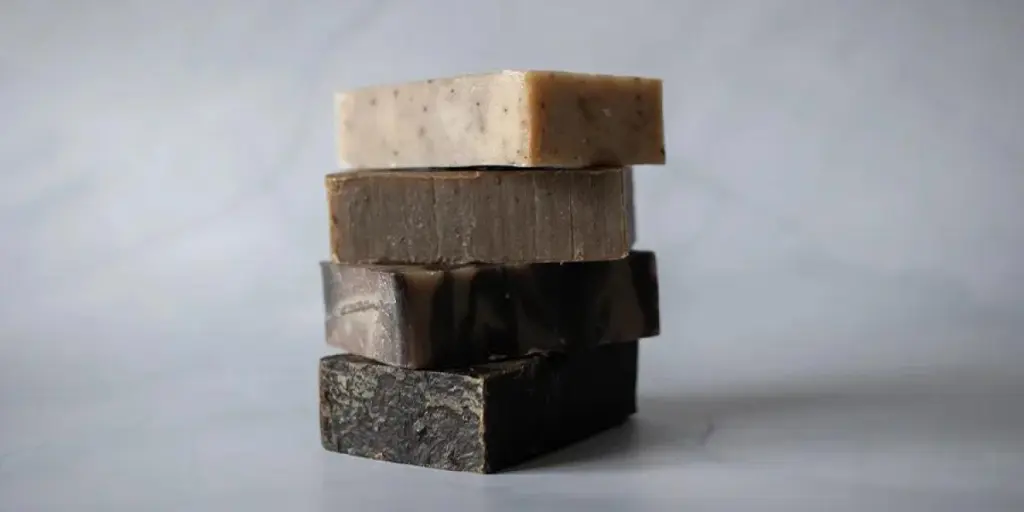In the evolving landscape of cleaning tools, dusters have become essential assets in both residential and commercial settings, playing a critical role in maintaining cleanliness and prolonging the life of surfaces. For businesses seeking effective cleaning solutions, understanding current market trends and innovations is crucial as the demand for eco-friendly and specialized dusters grows. With options spanning from delicate feather dusters to powerful compressed air varieties, the right choice can streamline operations and enhance cleaning efficiency. This article provides professional buyers with valuable insights into market dynamics, top product types, and key considerations to make informed purchasing decisions. As trends shift, these insights help businesses align with high-performing and sustainable cleaning solutions.
Table of Contents
● Market overview: Growth and trends in the duster industry
● Understanding duster types and their best uses
● Key factors to consider when choosing dusters
● Conclusion
Market overview: Growth and trends in the duster industry

Current market size and future growth projections
The global duster market, particularly driven by compressed air dusters, is experiencing steady growth. According to Verified Market Reports, the market is valued at $143 million in 2023 and is projected to reach $200 million by 2030, with a compound annual growth rate (CAGR) of 4.6%. This expansion is largely fueled by rising consumer and commercial awareness around effective, eco-friendly cleaning products, especially in sectors reliant on electronics and precision equipment maintenance.
Driving factors behind market demand
Duster demand is influenced by increased electronics use, with compressed air dusters proving essential for delicate electronics maintenance, especially as remote work trends continue to rise globally. The shift towards eco-conscious products is another driving factor; compressed air dusters with sustainable propellants are increasingly preferred due to reduced environmental impact. Heightened awareness of cleanliness in both home and office environments has spurred a renewed focus on high-quality dusting tools that cater to various surfaces, from delicate electronics to upholstered furniture, creating a robust demand for versatile dusting solutions.
Key players and innovative trends
Leading brands like Falcon Safety Products and Dust-Off are investing heavily in R&D to enhance eco-friendly formulations and advanced propellant technologies that prioritize user safety. Many of these manufacturers are responding to consumer preference for sustainability by producing air dusters with natural propellants and incorporating bitterants to discourage misuse. Other players, such as 3M and Endust, are focusing on product versatility, catering to residential and commercial sectors alike, thus reinforcing the market’s responsiveness to eco-innovation and safety concerns in dusting tools.
Shifts in consumer expectations
Consumer expectations have shifted toward high-efficiency and sustainable cleaning products. Buyers now seek dusters that offer both high performance and minimal environmental impact, especially those made with biodegradable materials or that are reusable. This trend is pushing companies to balance product efficacy with eco-friendly design, reshaping the market landscape and positioning sustainability as a central value proposition in duster product development.
Understanding duster types and their best uses

Feather dusters: Classic choice with a gentle touch
Feather dusters, especially those crafted from ostrich down feathers, utilize unique micro-barbs on each feather that create static charges, which attract and hold dust particles. Unlike synthetic options, ostrich feathers naturally contour to surfaces, making them ideal for dusting complex or fragile items like antique frames and crystalware. The natural oils within ostrich feathers further enhance dust capture without spreading it around, although this type requires gentle cleaning to maintain effectiveness.
Natural fiber dusters: Sustainable solutions for thorough dusting
Natural fiber dusters, particularly those made from lambswool and untreated cotton, leverage the unique cuticle layer of natural fibers, which are covered in overlapping scales. These scales trap dust particles effectively, especially for dense or textured surfaces such as brick, wood, and decorative stone. Lambswool dusters are also rich in lanolin, which provides a mild self-cleaning effect that improves dust retention. Due to their structure, these dusters are generally more resilient but may require careful storage to prevent fiber degradation, especially in high-humidity environments.
Microfiber dusters: Versatile and durable for multiple surfaces

Microfiber dusters are composed of ultra-fine synthetic fibers split into grooved capillaries, which generate a significant surface area for dust and moisture retention. Each fiber is split during the manufacturing process to increase the electrostatic charge, making microfiber capable of capturing dust particles as small as a few microns. This structure also allows microfiber dusters to be used dry or with minimal water without losing efficiency, while their heat-resistant fibers are suitable for dusting areas near electrical equipment and low-heat appliances. Proper care is essential, as the grooves can clog with oils if washed incorrectly, reducing the duster’s effectiveness.
Compressed air dusters: High-power solution for electronics
Compressed air dusters function by releasing air at pressures around 70-90 PSI (pounds per square inch), enabling a direct, high-speed blast to dislodge dust from narrow spaces, including keyboard mechanisms and micro-circuitry. Many are formulated with inert propellants like nitrogen, which evaporate quickly and minimize condensation risks on delicate electronics. Modern compressed air dusters incorporate valve and nozzle designs that allow precision targeting while controlling particle dispersion. Some models include anti-static properties, reducing the chance of static buildup on sensitive components, which is especially useful in environments with high dust and electronic density.
Vacuum dusters: Deep-cleaning choice for upholstery and carpets
Vacuum dusters utilize multi-stage filtration systems, often combining HEPA filters with mesh screens, to ensure that dust particles are fully contained within the device. High-quality vacuum dusters can achieve up to 99.97% particle retention for particles as small as 0.3 microns, making them invaluable for allergen-sensitive environments. With brushless motors that reduce wear, vacuum dusters offer longevity for continuous use in commercial settings. They come with specialized attachments, such as soft-bristle brushes for delicate fabrics and crevice tools, enabling effective dust extraction from textiles and furniture without damaging fibers.
Dusting gloves and sprays: Precision and protection combined
Dusting gloves, typically made from electrostatically charged fibers or rubberized materials, allow close control for dust removal in small or irregular spaces. The fiber density in these gloves can range from 20 to 50 GSM (grams per square meter), allowing for precision cleaning without scratching. Dusting sprays are often formulated with anti-static agents and surfactants that neutralize dust and adhere to surfaces, forming an invisible layer that repels future dust accumulation. These sprays are compatible with various surfaces, including stainless steel, hardwood, and electronics, creating a protective, streak-free finish ideal for commercial environments.
Key factors to consider when choosing dusters

Material considerations: Finding the right fit for your needs
Selecting the right duster material depends on the specific surfaces and environments being cleaned. Feather dusters, particularly those made from ostrich feathers, are ideal for delicate items like glass and antiques due to their soft, flexible fibers that capture dust without scratching. Natural fiber dusters, such as lambswool or untreated cotton, work best on rougher surfaces like wood or textured fabrics because of their strong dust-attracting properties. Microfiber dusters offer versatility across both dry and wet cleaning applications and can handle a range of surfaces from polished wood to metal appliances, thanks to their highly absorbent fibers that trap even microscopic particles.
Eco-friendliness and sustainability
As environmental awareness grows, eco-friendliness has become a top priority in duster selection. Options like biodegradable and sustainably-sourced natural fibers are increasingly popular, though they may come at a higher initial cost. Many compressed air duster manufacturers are now prioritizing eco-friendly propellants, such as nitrogen and other inert gases over hydrofluorocarbons (HFCs), which can have a detrimental impact on the environment. This shift aligns with a broader movement toward sustainable cleaning tools that reduce waste, such as washable microfiber dusters, which can endure hundreds of wash cycles without degrading in effectiveness.
Maintenance and durability for long-term use
Maintenance is key to the longevity and effectiveness of any duster, and investing in reusable, washable materials like microfiber can reduce long-term costs and environmental impact. Microfiber dusters, for example, are designed to retain their dust-trapping efficiency through repeated use if they are cleaned properly—avoiding fabric softeners, which can clog fibers, and washing them separately to prevent lint buildup. Natural fiber dusters, while effective, may require more delicate storage to prevent fiber breakage or clumping, making them slightly less durable in high-use scenarios compared to synthetic alternatives.
Safety features: Ensuring safe use across all surfaces
Safety considerations are particularly relevant for compressed air dusters, where the inclusion of bitterants helps deter misuse while protecting users and surfaces. Non-toxic formulations are also important for spaces with sensitive electronics or frequent human contact, where traditional chemicals can pose a risk. For electronics, compressed air dusters with anti-static properties are essential to prevent dust-attracted static buildup, reducing the risk of component damage. When selecting dusters for sensitive environments, prioritize products that are certified non-toxic and meet regulatory safety standards for safe and responsible use.
Cost and budget considerations
Budgeting for dusters involves balancing initial investment against durability and long-term performance. High-quality options like microfiber, while slightly pricier up front, provide cost savings over time due to their reusability and low maintenance requirements. For buyers in commercial settings, feather or lambswool dusters may be worth the higher cost if they meet the specific needs of delicate or high-end furnishings. On the other hand, synthetic microfiber and compressed air options offer affordable, versatile choices that still deliver reliable results, making them suitable for buyers aiming to manage budget without compromising on efficiency.
Conclusion

Choosing the right duster requires a careful assessment of cleaning needs, budget, and sustainability goals, with each material offering unique advantages for different applications. From delicate feather dusters to durable microfiber options, businesses now have access to a diverse range of tools that enhance both efficiency and environmental responsibility. As the duster market continues to evolve, more options emerge that prioritize effectiveness, durability, and eco-consciousness, allowing professional buyers to make informed selections that align with today’s demand for both performance and sustainability.




